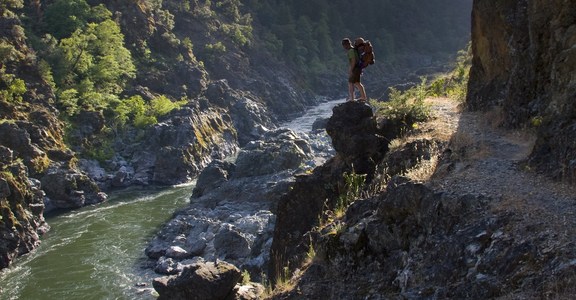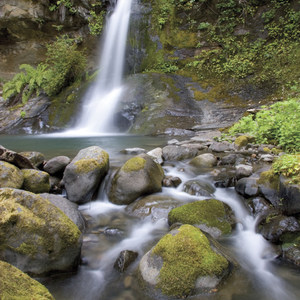North Fork of the Big Wood Overview
The North Fork of the Big Wood drainage is the hiking epicenter of the Boulder Mountains. The main canyon accesses two large tributaries, the West Fork of the North Fork (WFNF) and the East Fork of the North Fork (EFNF). The hikes ascend dramatic, steep-walled canyons that access multiple alpine cirques ringed by the highest peaks in the range.
The underlying geology of the North Fork of the Big Wood River is a combination of sedimentary and volcanic rock. Neither is particularly durable, and both rock units tend to break apart. A wide variety of individual rock units provide a wash of reddish and brown hues that blend together in large, sweeping faces of talus and scree in the upper elevations. Below treeline much of the underlying rocks are covered with forests and soil, but canyon walls are consistently steep down to the valley floor.
East Fork of the North Fork of the Big Wood
The trail up the EFNF Canyon offers a pleasant walk through shaded forests Douglas fir forests without the traffic of trails closer to town. An impressive display of avalanche paths and a pretty waterfall 1.5 miles up the trail are the main attractions.
The first half of the trail up the East Fork alternates between pleasantly fragrant Douglas fir forests and openings punched through the trees by massive avalanche paths. The bottom of the slide paths are littered with dead trees that are often swept hundreds of feet up the opposite side of the canyon by the powerful winter slides.
After about 1.5 miles the trail steepens considerably, climbing through loose rock and across a steep side-hill to a view down onto a pretty three-tiered waterfall (though piles of compacted snow deposited by avalanches can often clog the creek and falls well into July). At 2 miles there is a major split in the canyon at a creek crossing. This is good turn-around point.
Hikers who want to continue up the canyon will have to do a little sleuthing to find the trail. It fades a bit after the creek crossing, but it can be found at the eastern end of a sloping meadow where it re-enters the woods. It continues for another mile through dense forest before fading in the landscape at a second series of sage and grassy meadows.
Reference: All content excerpted from Exploring Sun Valley - A Comprehensive Guide to the Boulder, Pioneer, and Smoky Mountains by Idaho River Publications.
Logistics + Planning
Current Weather: Powered by Dark Sky







Preferable season(s)
Congestion
Parking Pass
Pros
Cons
Trailhead Elevation
Features
Suitable for
Our mission is to inspire adventure with beautiful, comprehensive and waterproof map-based guidebooks. Owner, publisher, and photographer Matt Leidecker, grew up exploring and guiding on the rivers in central Idaho. His award winning Middle Fork of the Salmon River – A Comprehensive Guide is the standard by which other river guidebooks are measured. Printed on virtually indestructible YUPO paper, IRP guides are truly unique all-in-one resources for adventure. Each book is loaded with full-color maps, stunning photographs, and information on the history, geology, and wildflowers. Visit Idaho River Publications to explore our guidebooks to the Rogue River in Oregon and the mountains of Central Idaho.
























Comments
Sign In and share them.